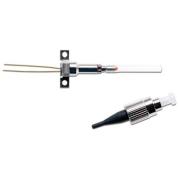
Next-Generation Photonic Detector Offers High Speed, High Gain and Low Noise for High-End and Fiber-Based Telecom Test and Analysis Equipment Applications
Excelitas Technologies® Corp., a leading industrial technology manufacturer focused on delivering innovative, market-driven photonic solutions, introduces the C30733BQC-01 InGaAs Avalanche Photodiode. Featuring a unique combination of high gain and fast recovery time, coupled with low noise performance, the new C30733BQC-01 Avalanche Photodiodes are an ideal solution for high-end telecommunication test equipment applications, optical communication and distributed fiber sensing systems, and eye-safe LiDAR and laser range finding devices, especially in Smart Cities and Smart Factories.
Excelitas’ C30733BQC-01 offers a unique chip design to deliver cutting-edge performance with a typical operation gain of 40, setting a new trend in high-speed applications that require best-in-class Signal-to-Noise ratio between 1000 nm and 1700 nm. Equipped with an FC/APC connector, C30733BQC-01 Avalanche Photodiodes are easy to install in all fiber-based systems as Optical Time Domain Reflectometers (OTDR), and Distributed Optical Fiber Sensors (DOFS) for distributed temperature sensing (DTS), distributed audio sensing (DAS) and fibers strain measurements. Additional features include:
- Small active area of 30 μm
- High responsivity
- Low dark current and noise
- Pigtail design for easy fiber coupling
- RoHS compliance
“Excelitas is excited to expand our next-generation sensor technology family with addition of the C30733BQC-01 InGaAs Avalanche Photodiode,” said Jens Krause, Applications Engineer High Performance Sensors at Excelitas. “Its low noise at high gains enable the precise measurement of long range fiber networks or free space measurements, offering the perfect choice for design engineers, application engineers and product managers developing test equipment requiring measurements in the 1300 nm to 1650 nm range.”
